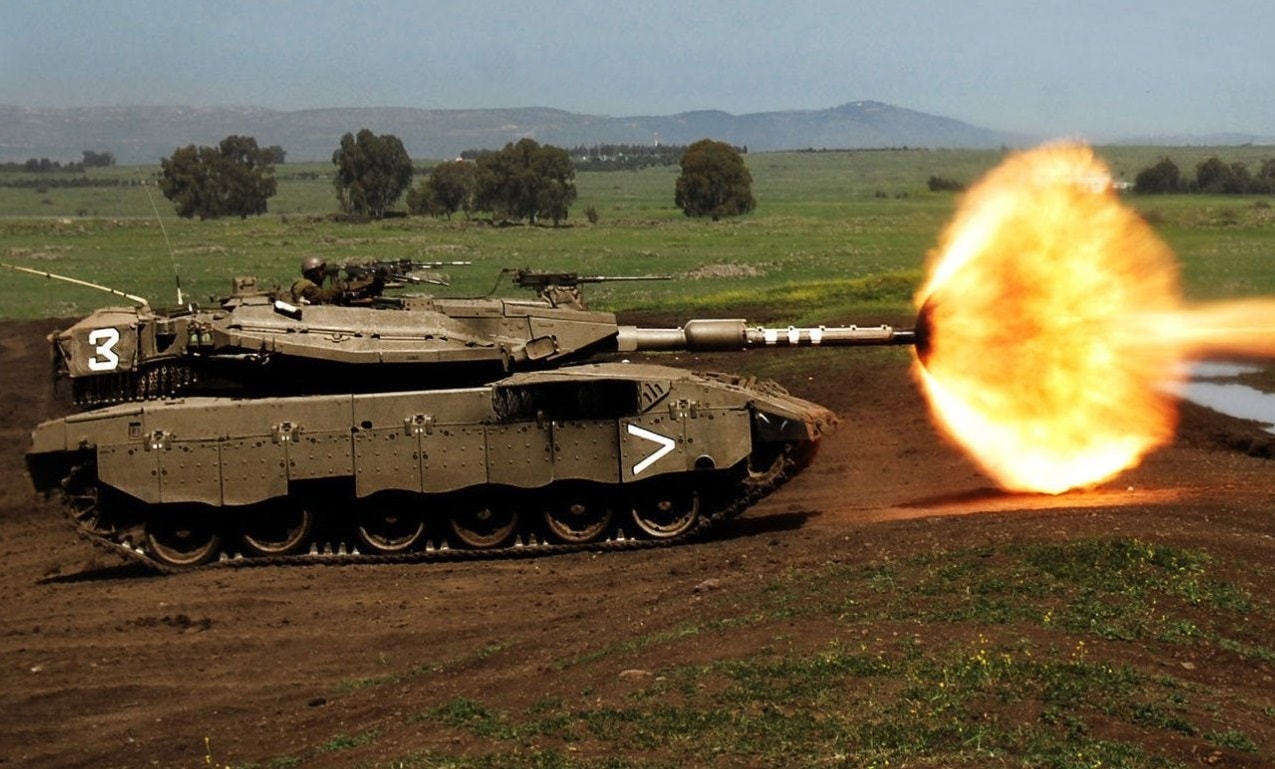Israel’s Merkava tank emerged in reaction to lessons from the 1973 October War, the last major tank war faced by the Israeli army. Israeli General Israel Tal wanted a tank that prioritized crew protection compared with the other tanks in existence. It has gone through five variants, the latest being the Merkava Mk. 5, and has been the mainstay of the Israel Defense Forces (IDF) for over 40 years.
All variants of the Merkava maximize crew survivability even if the tank itself is knocked out.
One of the World’s Best Tanks
The Merkava Mk. 4, the most abundant in Israel’s inventory, is considered one of the 10 best tanks in the world alongside America’s M1 Abrams, Germany’s Leopard 2, and Britain’s Challenger 2.
The Merkava places the engine in contrast with other tanks in service because it places it in the front of the tank. This enhances crew safety by adding an additional obstacle for anti-tank rounds. The Merkava Mk. 1 debuted during Israel’s 1982 invasion of Lebanon. When the order is given to enter Gaza and potentially to enter Lebanon for the first time since the 2006 Israel-Hizballah War, the Merkava, Hebrew for chariot, will be at the tip of the spear.
Four fully equipped infantry can enter the tank through a rear hatch in battle for added protection. The crew can also egress through the hatch as well in an emergency.
Merkava Mk. 4 Designed to Fight Terrorists
The Mk. 4 has been designed with urban combat in mind. The Mk. 4M variant comes equipped with the Trophy anti-tank missile protection system that uses radar to detect incoming anti-tank missiles and defeats them with a shotgun blast. The system also notifies the crew where a shell came from. It has proven effective against the RPG-29 and the AT-14 Kornet missiles used by Hizballah and Hamas.
Chains that dangle on the rear of the turret aim to cause incoming rocket-propelled grenades to detonate prematurely.
It is larger than its predecessor models and boasts a 120 mm main gun capable of firing NATO rounds. The gun built by Israel Military Industries (IMI) marks an improvement on the Mk. 3 version and has a higher muzzle velocity. It also can fire LAHAT anti-tank missiles that can target vehicles or helicopters.
The Mk. 4 uses composite armor that has become standard on European and American tanks. The armor, however, is inferior to the depleted uranium armor found on the American Abrams tanks used by the U.S. Army. Depleted uranium armor is deleted from export versions of the Abrams.
“Any tank design is a compromise between firepower, protection and mobility. The Israelis opted to add turret armor, and accepted a lower-than-usual power-to-weight ratio from the 1,500-horsepower engine. They couldn’t add more armor to the top of the hull without further reducing the tank’s mobility,” Forbes writer David Axe writes, “But a top-down strike on the front of the hull at best destroys the tank’s engine and immobilizes it. A strike on the back of the turret, on the bustle, tends to ignite the ammo stored there. But the ensuing secondary explosion occurs outside the turret, not inside, where the crew is.”
Hamas drones immobilized Merkava Mk. 4 tanks during its invasion last week using drones that could be dropped from above, penetrating the thin armor on top of the turret. The tactic was developed and perfected on the battlefield in Ukraine raising speculation about potential Russian influence or training.
Israel began mounting additional armor on the top of the turrets of its tanks starting with the Merkava Mk. 2C in the early 1980s after learning the hard way. The Merkava Mk. 4 is the best protected Israeli tank yet put into service.
Merkava Mk. 5 Enters Service
The Merkava Mk. 5 began entering into service earlier this year. The Mk. 5 includes the same basic armament as its predecessor. It also has a 360 degree view of the outside of the tank using cameras mounted outside of the hull. It features new sensors that let it independently acquire targets and hit them rapidly. It boasts electronic warfare capabilities and an improved 1,500 hp diesel engine with a top speed of just under 40 miles per hour.
The Merkava will prove itself once again in combat with the terrorist groups that besiege it soon enough.
John Rossomando is a defense and counterterrorism analyst and served as Senior Analyst for Counterterrorism at The Investigative Project on Terrorism for eight years. His work has been featured in numerous publications such as The American Thinker, The National Interest, National Review Online, Daily Wire, Red Alert Politics, CNSNews.com, The Daily Caller, Human Events, Newsmax, The American Spectator, TownHall.com, and Crisis Magazine. He also served as senior managing editor of The Bulletin, a 100,000-circulation daily newspaper in Philadelphia, and received the Pennsylvania Associated Press Managing Editors first-place award for his reporting.

